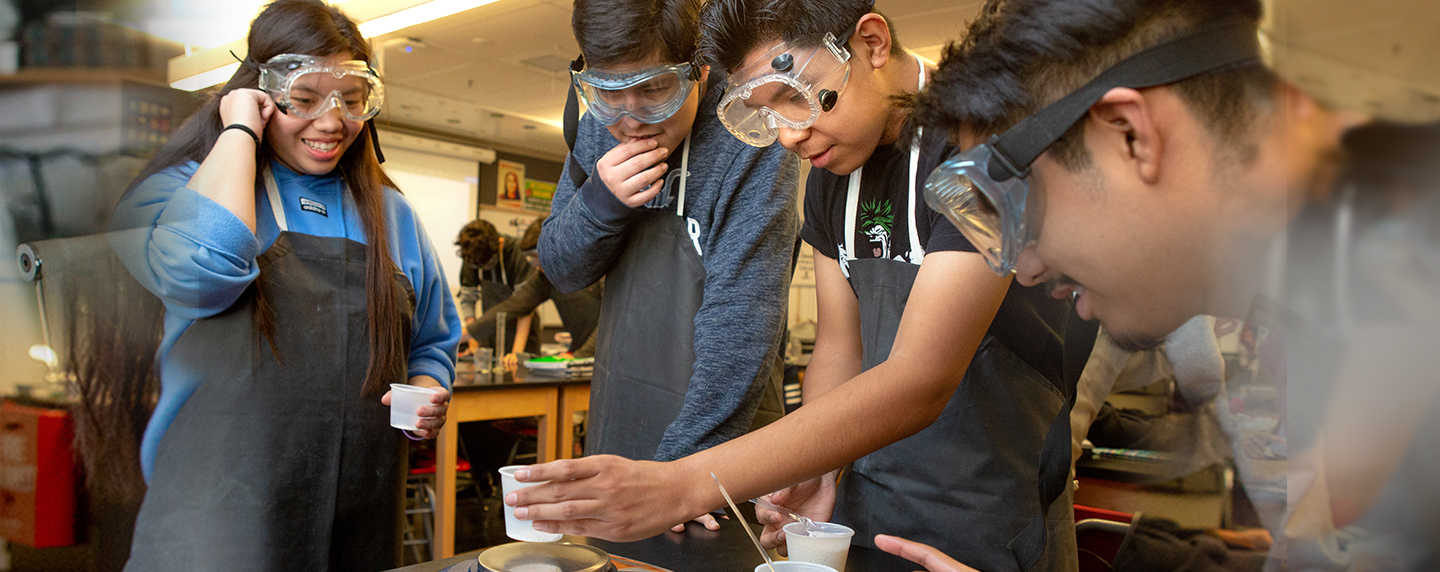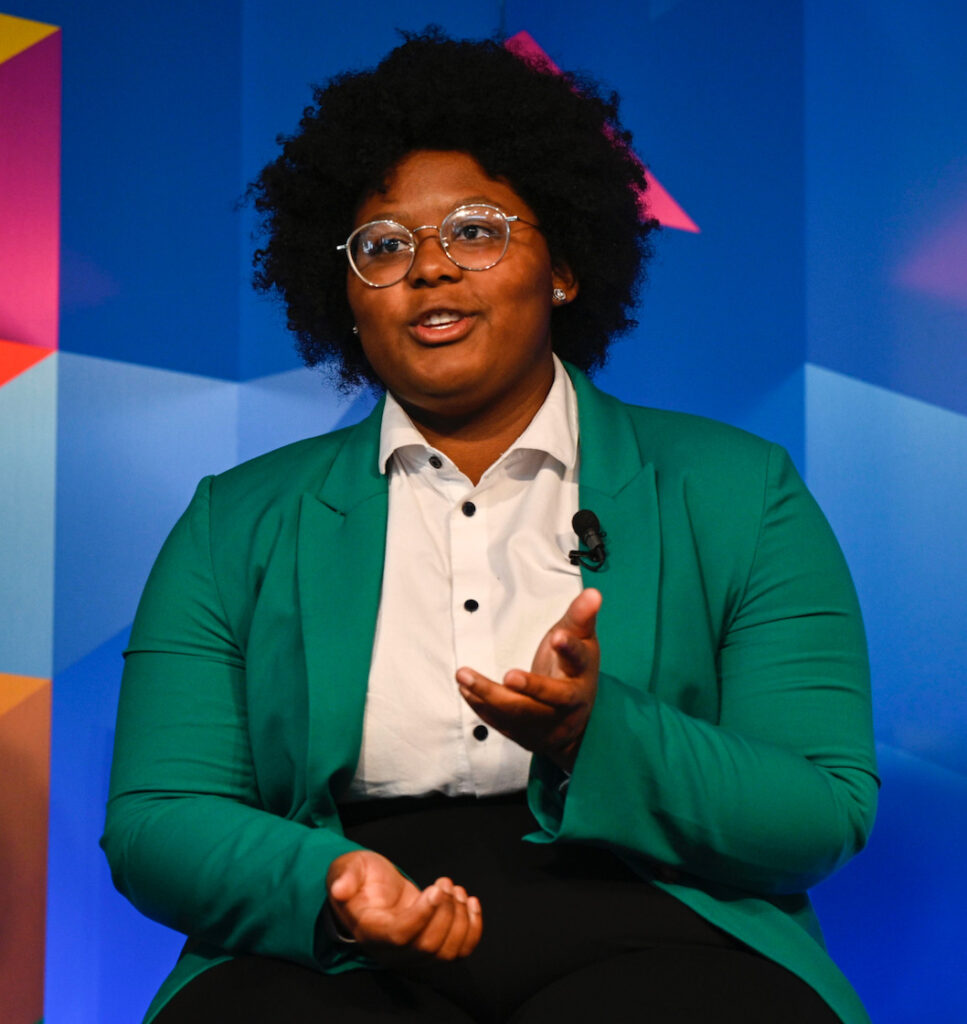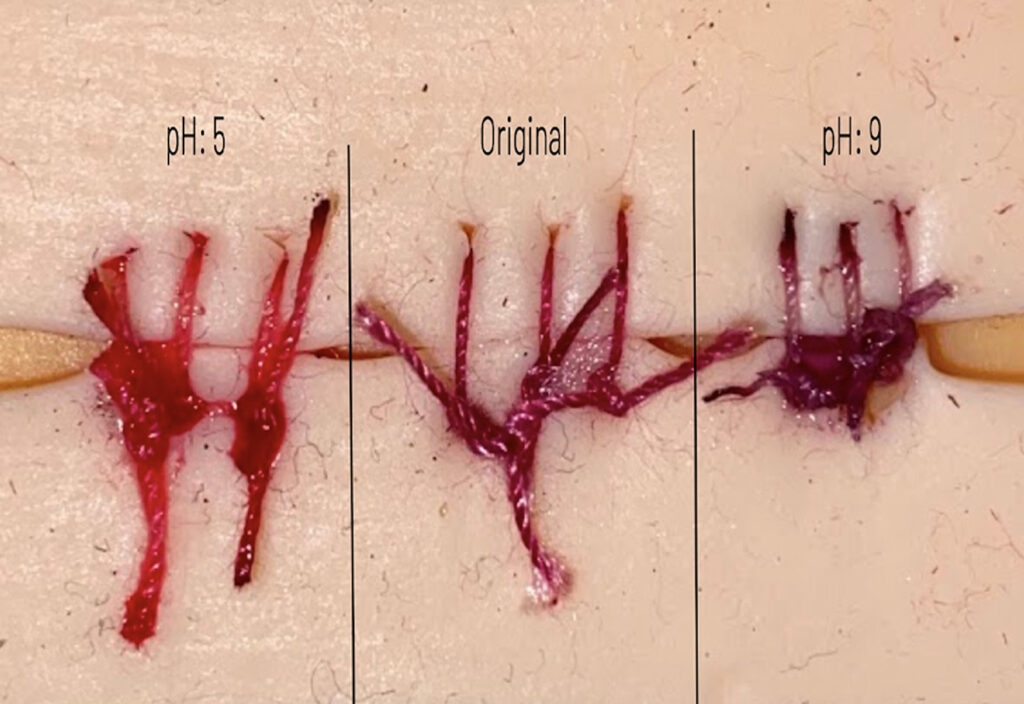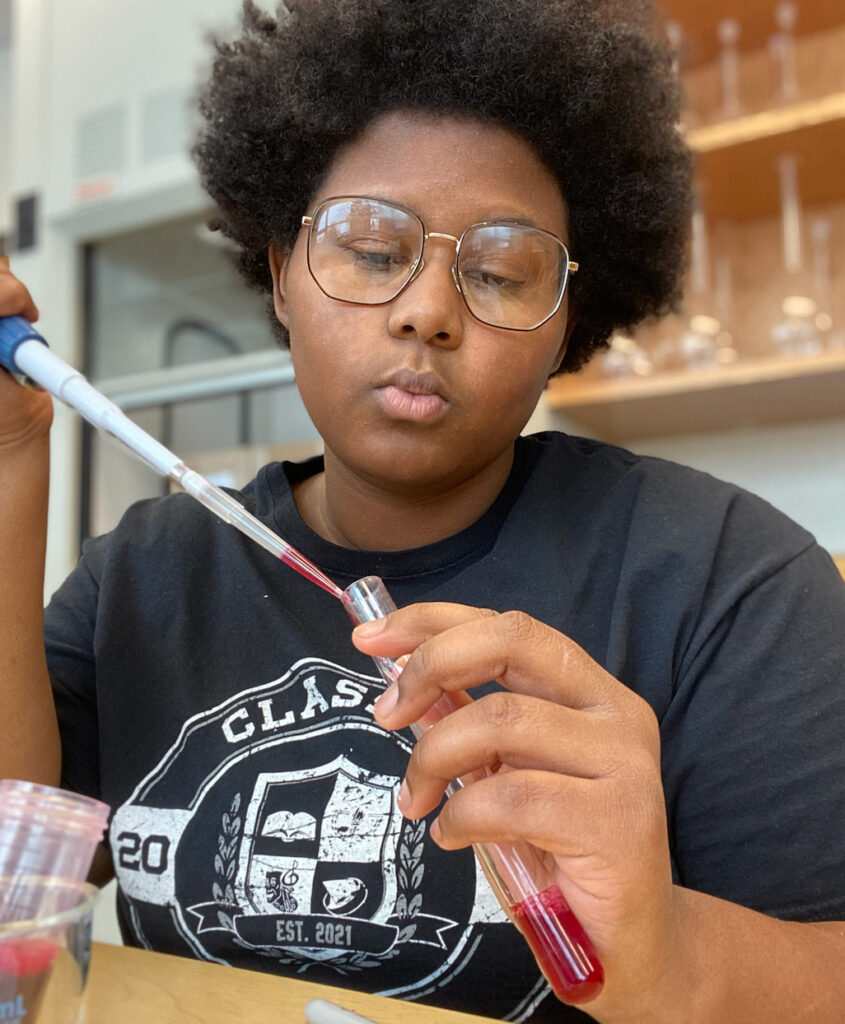
Stories of Impact
Back to In Action / Dasia Taylor, Student
Dasia Taylor
Sophomore, University of Iowa, Iowa City, Iowa
Dasia Taylor’s path to invention began in 11th grade at Iowa City West High School in Iowa, where she developed low-cost “smart” sutures to help detect infections. She is currently a student at the University of Iowa, as well as an entrepreneur and STEM advocate.
Dasia’s sutures started as the subject of a science fair project, and ended up winning top prizes at state and national competitions. Now 19, Dasia is in the process of patenting her sutures, which switch color if an infection has occurred. An affordable and equitable innovation on electronic “smart” sutures, Dasia’s invention could transform health care in underserved communities and save countless lives.
Dasia received national attention for her invention, appearing on the Ellen DeGeneres Show and in many news articles. But her favorite part of the job, she says, is the volunteer work she does at elementary schools back home in Iowa. “It just makes my heart happy,” she says.
And her heart is focused on equity. It’s the lens through which she approaches everything — from invention to outreach — and is the inspiration for her new company, Variegate.

Dasia Taylor is in the process of patenting her first medical device at 19 years old — low-cost sutures that switch color if an infection has occurred, an affordable innovation on electronic “smart” sutures
I think innovation goes back to your childhood, like creating a new game to play on the playground. Innovation goes deeper than something big that changes the world.
Where did your path to becoming an inventor begin?
Officially, I began inventing my junior year of high school, when I raised my hand in science class and said, “I want to do the science fair.” But honestly, I think innovation goes back to your childhood, like creating a new game to play on the playground. Innovation goes deeper than just something big that changes the world. But junior year is when people started calling me an inventor. And I put it that way because it took me a good long while to actually call myself an inventor — I thought I was doing the science fair just because I knew I could do it. By no means did I plan on inventing a medical device initially.
So what happened that made you choose sutures for your project?
I told my teacher that I wanted to do something within the medical space. At the time I was very interested in medicine — I had asked for a suture kit for Christmas my sophomore year thinking I needed to practice in preparation for medical school. And before that, when I was younger and I got my first taste of Grey’s Anatomy, I remember slicing open my teddy bear and sewing it back up with a needle and thread. Those were like stepping stones to my junior year of high school. And that’s when I found this article about these high-tech smart stitches, and I was like, oh, this is so cool. But my equity brain was like, ding ding ding, this is not equitable. And so I decided to work on that. I’ve always been a hands-on learner. And I figured if I was going to learn the medical space, I should build in the space. That was that inventor seed within me. I’m pretty sure I still have that bear, actually, now that I think about it.
How did you figure out that beets were key to your innovation?
I think it’s good to preface that I had no science fair research experience prior to entering into this science fair realm. As someone who didn’t know what the limits were, this was really important because I learned everything from scratch. Everything I know now is something that I’ve had to learn within the process.

It took a few days to gather my thoughts but then I landed on the idea to make stitches that change color. That was the goal. I told my teacher my idea, and she suggested I research something called natural indicators. So I did that, and learned that some plants have a substance that can be extracted and used to reveal the pH of another substance because they change color. I went down the research rabbit hole and started collecting information. Then I started putting two and two together. I researched the pH of a wound, and used the scientific method to find a plant that would indicate when that pH changed — in other words, something that would show when the wound becomes infected. Turns out, beets met all of my criteria. I’ve rocked with them ever since.
Speaking of changing color, you’ve recently founded a company that embodies that same principle.
Yes, I recently founded a company called Variegate, which means to change color, which I think is super cool. And that stems directly from our main products, which are the color-changing stitches, and what everyone kind of knows me for at this point. Another facet of the definition of variegate is to diversify. I chose that name in particular, because of my equity work, and it was really important to me, being a Black queer founder, that my company be a diverse space. We’re still in early phases, but we’re super excited to get things rolling over the next couple of years and take the space by storm.
What drives you to stay focused on equity? Is it personal?
It’s very personal for me. I grew up in a single parent household. My mother had me at 18 years old so in a sense, she and I grew up together. Everything she was learning, I was learning. And honestly, I was learning about all the inequities that existed. I was probably one of only five black kids in my school in Indiana. My hair was different, the way I talk is different. My experiences are different.

In junior high in Iowa, I joined the Black History Game Show, which is a statewide competition centered on Black History Month, at the time when there were a lot of high profile killings of black men, like Trayvon Martin, Eric Garner, Mike Brown. We made a Black Lives Matter sign and put it in the busiest hallway of the entire school. But within passing time, which is about four minutes, it disappeared. The principal had torn it down. So that experience kind of pushed me more toward K-12 equity. There have been a lot of personal experiences that I’ve had, and as I get older, they may come less, but they come harder.
What role has mentorship played in your life?
I cannot fully explain to you how important mentors are. I attribute a lot of my success to the people I’ve met and the things that they’ve taught me. Because we all have to learn from somebody. I’m working on being something that I’ve never seen before. And I’m learning from all of these different people, just absorbing all of these lessons from the stories that they’re telling me. Mentors can be anybody, but educators are definitely at the top of my list.
I cannot fully explain to you how important mentors are. Mentors can be anybody, but educators are definitely at the top of my list.
How do you handle the inevitable frustration that comes with invention, and what advice do you have for kids aspiring to be like you?
I definitely have down days, and I am very pro-crying. That’s the best way I can put it. If I need to cry, I’m going to cry. When all else fails, I call my mom, and she reminds me who I am. She always told me, you can do anything you put your mind to. And I feel like I’m living proof of that. So my advice, as simple as it sounds, is to just go for it. I started at ground zero. I had zero baseline knowledge about the scientific process and research, let alone innovation and how that works. I think that that instills something in kids. They see that I’ve done all those things, that I’ve been on Ellen, but I’m still out here, volunteering in the community and eating ice cream at the Dairy Queen.
Meet Dasia as a keynote speaker at our upcoming InventEd 2022 Convening, in-person and online this November. Register here: https://convening.inventioneducation.org/
